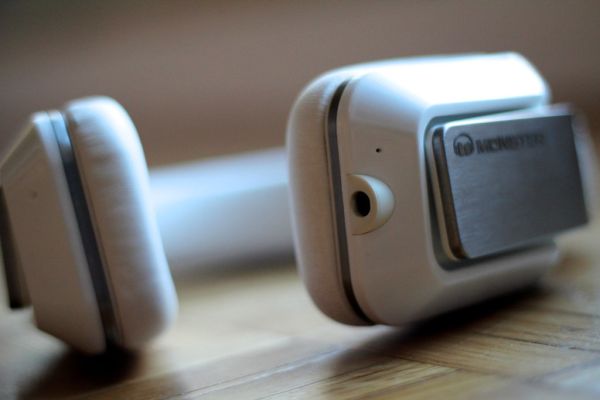Is 25 Db Noise Cancellation Good?
Imagine a serene oasis amidst a bustling city – that’s the promise of 25 dB noise cancellation. But is it truly effective? With various noise levels encountered daily, understanding the impact of 25 dB noise cancellation is essential. From the quiet hum of a library to the roar of a busy street, how does this level of noise cancellation measure up? Let’s explore whether 25 dB noise cancellation is the golden standard or if there are better options available to provide tranquility in a noisy world.
We are supported by our audience. When you purchase through links on our site, we may earn an affiliate commission, at no extra cost for you. Learn more. Last update on 9th July 2025 / Images from Amazon Product Advertising API.
Understanding Noise Cancellation Technology
Noise cancellation technology operates by utilizing microphones and speakers to generate anti-noise, effectively reducing unwanted ambient sounds. At a 25 dB noise cancellation level, this technology proves efficient in diminishing low to moderate noise levels commonly found in environments like offices or homes. The performance of noise cancellation is influenced by the frequency of the sound, with better results achieved at lower frequencies.
When looking at the 25 dB noise cancellation level specifically, it is ideal for enhancing focus and reducing distractions in settings where the ambient noise is not overly loud. In quieter environments, this level of noise cancellation can significantly improve your ability to concentrate on tasks without being disturbed by background sounds. By effectively reducing unwanted ambient sounds, the technology creates a more conducive environment for productivity and concentration.
Understanding the focus of noise cancellation technology at 25 dB is essential for determining its suitability in different scenarios. While it excels in quieter settings, environments with louder noise levels, such as airplanes or construction sites, may require higher levels of noise cancellation, typically 30 dB or more, to achieve the same level of performance in reducing distractions and enhancing focus.

Comparing Different Noise Cancellation Levels
Comparing different noise cancellation levels reveals varying degrees of effectiveness in reducing ambient sounds, with each level tailored to specific noise environments and noise reduction requirements. A noise cancellation rating of 25 dB is considered good, providing an effective solution to reduce moderate noise levels. This level of noise cancellation can help block out common sounds such as office chatter, background music, or low-level traffic noise, making it suitable for daily use in quieter environments or for light noise reduction needs. While 25 dB noise cancellation is not as robust as higher ratings, it still offers a noticeable improvement in reducing ambient noise.
In comparison to higher noise cancellation ratings like 30 dB or more, 25 dB is better suited for environments where the noise levels are not excessively high or for individuals with less demanding noise reduction requirements. Higher ratings are more effective in louder environments or for situations where a greater level of noise reduction is necessary. Therefore, when choosing a noise-canceling device, it is essential to consider the specific noise environment and noise reduction needs to determine the most appropriate level of noise cancellation for your use case.

Effectiveness of 25 Db Noise Cancellation
In evaluating the efficacy of 25 dB noise cancellation, it is essential to consider its impact on reducing ambient sound levels in various environments. A 25 dB noise cancellation rating can effectively reduce noise exposure by 9 dB, providing significant protection in moderate noise environments. This level of protection is particularly suitable for mitigating the effects of loud talking, vacuum cleaners, or moderate rainfall on hearing health.
When combined with other protective measures, such as hearing protection products, a 25 dB noise cancellation rating can enhance overall noise reduction effectiveness. While not the highest rating available, 25 dB noise cancellation still offers valuable protection in everyday noisy situations. Understanding the context of noise exposure and the specific environment is crucial in determining the adequacy of 25 dB noise cancellation for individual needs.
Occupational Safety guidelines recommend using hearing protection devices with a Noise Reduction Rating (NRR) that can effectively reduce noise in decibels to protect against potential occupational noise exposure. In average noise environments, a 25 dB noise cancellation rating can provide a satisfactory level of protection. Therefore, it is essential to assess the noise levels and the potential for noise exposure in your environment to determine if 25 dB noise cancellation is sufficient for your hearing protection needs.

Suitable Environments for 25 Db Noise Cancellation
When considering suitable environments for 25 dB noise cancellation, it is important to assess the ambient noise levels and the specific activities or settings where the technology will be utilized. 25 dB noise cancellation is effective for reducing moderate noise levels generated by common sources such as vacuum cleaners, alarm clocks, and moderate rainfall. It can provide significant noise reduction in quiet environments like libraries and during whispered conversations. In settings with noise levels around 50-60 dB, 25 dB noise cancellation can offer a noticeable improvement in sound quality.
However, it is essential to note that 25 dB noise cancellation may not be suitable for very loud environments, such as those with industrial machinery or snowmobiles. In such high-noise settings, a higher level of noise cancellation may be required to achieve adequate sound reduction. Nevertheless, for everyday activities where noise levels are not excessively loud, individuals seeking a balance between noise reduction and awareness of surrounding sounds may find 25 dB cancellation suitable for various daily activities.
Considerations for Noise-Canceling Headphones
For optimal selection of noise-canceling headphones, understanding the noise cancellation level is crucial in achieving desired sound isolation and immersive listening experiences. The level of noise exposure in your environment plays a significant role in determining the effectiveness of noise-canceling headphones. Headphones with higher dB ratings for noise cancellation, such as 25 dB, offer better noise reduction capabilities, making them ideal for environments with moderate ambient noise levels.
When selecting noise-canceling headphones, consider your individual preferences for noise isolation. If you are frequently in loud environments or require intense concentration on audio content, headphones with a Noise Reduction Rating (NRR) of 25 dB can provide the immersive listening experience you seek. Think of noise-canceling headphones as advanced earplugs that not only block out external sounds but also enhance audio quality.

